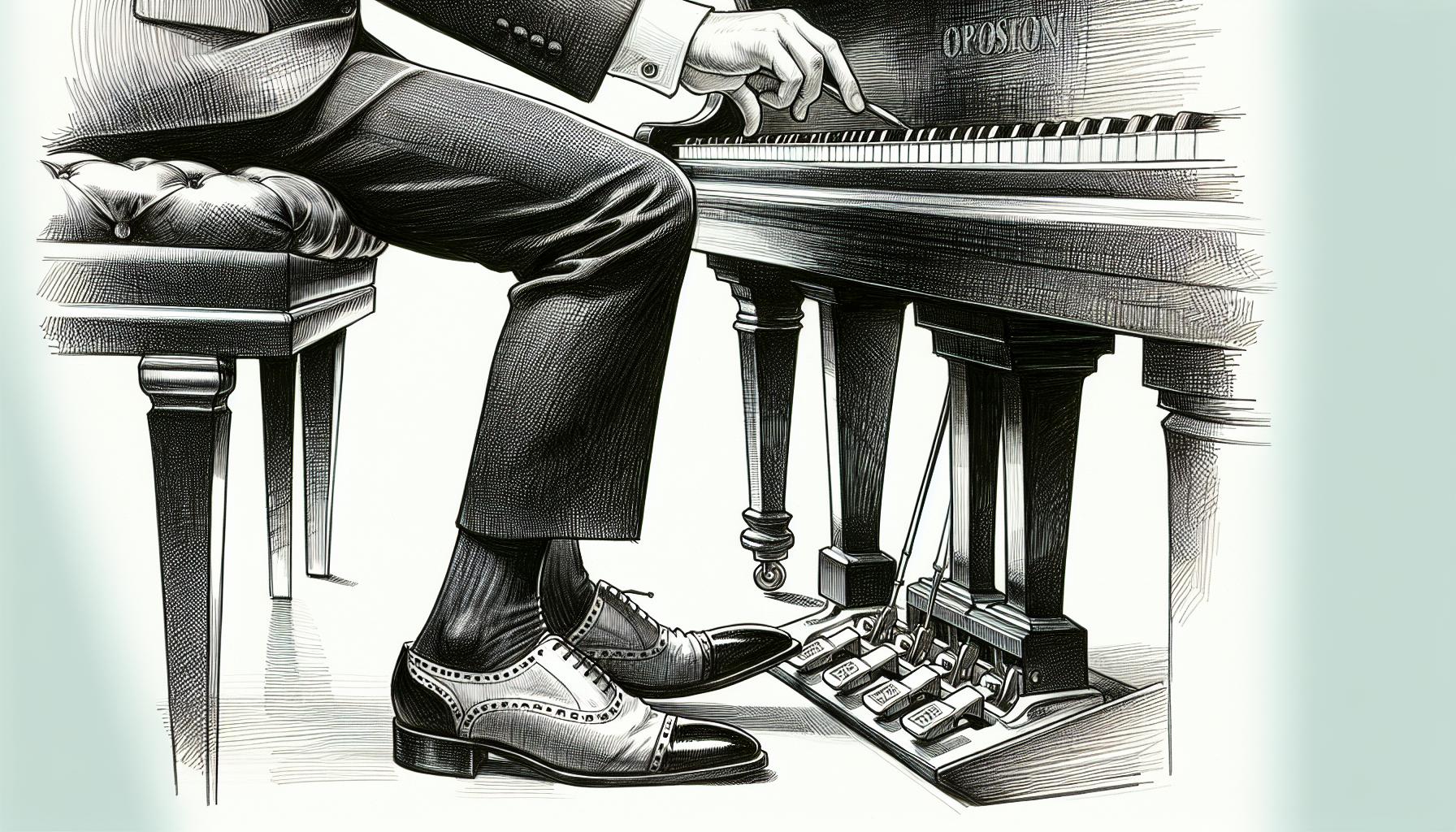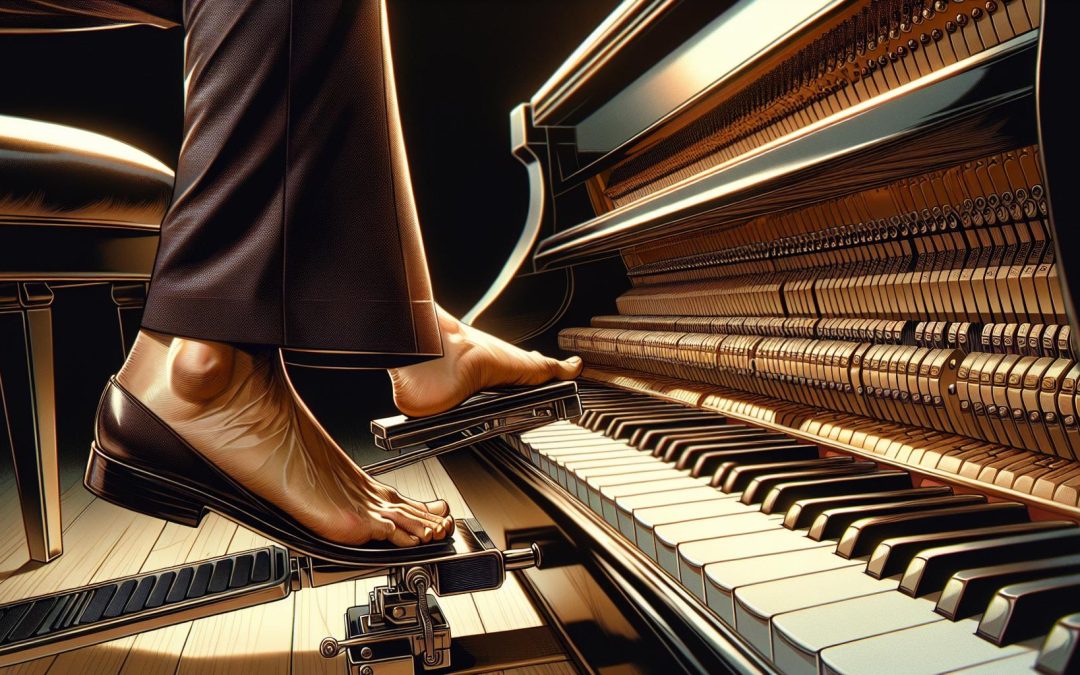Playing the piano beautifully isn't just about hitting the right notes; it's also about mastering the art of dynamics. One common challenge pianists face is softening loud notes to create a more expressive and nuanced performance. Whether you're tackling a delicate piece or aiming to add depth to your playing, controlling volume is key.
Fortunately, there are tried-and-true techniques that can help. From adjusting finger pressure to experimenting with pedal use, pianists have several tools at their disposal. Let's dive into how you can soften those loud notes and bring a touch of finesse to your piano playing.
Understanding Dynamics in Piano Playing
Mastering dynamics in piano playing is not just about hitting the keys with different amounts of pressure. It involves a deeper understanding of the emotional expression of music. Dynamics can transform a simple piece into a powerful narrative that captivates the listener's heart. They must consider dynamics as an integral part of their musical expression, akin to adding colors to a painting. Specifically, softening loud notes offers a unique challenge that requires both technical skill and emotional sensitivity.
When it comes to dynamics, pianists often struggle with controlling the volume of their play, especially in transitioning from loud passages to softer ones. It's not merely a matter of playing notes at a lower volume but entails a delicate process of expressing the same intensity and emotion at a softer dynamic level. This skill distinguishes outstanding pianists from the average, marking their performances with a signature touch of expressiveness and depth.
Several techniques play a crucial role in achieving this finesse:
- Adjusting Finger Pressure: Lightening the touch on the keys can reduce the volume without losing the note's clarity. It's about finding the right balance, where the sound is gentle yet still fully formed.
- Efficient Use of the Pedals: The sustain pedal, when used judiciously, can help maintain a note's presence without the need to strike the key hard. This technique is particularly useful for creating a smoother transition between dynamic levels.
- Arm Weight and Movement: Controlling the arm's weight allows for a more nuanced dynamic range. A relaxed arm can produce a soft sound, whereas a more forceful movement generates volume. Learning to modulate this aspect can vastly expand one's expressive capabilities on the piano.
Incorporating these techniques into one's playing is not an overnight process. It requires mindful practice and a keen ear for detail. Listening critically to one's playing and adjusting accordingly can lead to significant improvements. Moreover, recording sessions and seeking feedback from teachers or peers can provide invaluable insights into how effectively one is expressing dynamics.
A common mistake is to focus solely on the technical aspects, forgetting the emotional intent behind the music. Pianists should always aim to convey the composer's emotional narrative through their dynamics. For instance, a piece may call for a sudden softening of volume to evoke a sense of intimacy or reflection. Achieving this effect genuinely requires not only technical control but also an emotional connection to the piece.
Importance of Controlling Volume
In the world of piano playing, the ability to control volume isn’t just a technical skill—it's an art form. Controlling volume is essential for conveying the emotional depth and subtlety that pieces of music demand. It's the difference between a performance that is merely played and one that breathes life into the composer’s notes, creating a compelling narrative for the audience.
Pianists who master volume control can navigate through the nuances of a piece, like whispering through the quiet moments and soaring in the crescendos. This dynamic range is what makes a performance memorable. It’s about Communicating Feelings, where the intensity of a passage can elicit joy, sorrow, tension, or relief in the listener.
Achieving this requires meticulous attention to detail. Pianists must develop a keen sense of touch, able to adjust the force applied to the keys with precision. This is not about playing softly across the board but knowing when to apply gentle pressure to specific keys to soften loud notes without losing their intensity. The use of the pedals, especially the Soft Pedal and Sostenuto Pedal, plays a crucial role in this. The former changes the timbre and volume of the notes played, while the latter sustains selected notes at a softer volume.
Additionally, controlling volume is not solely for the sake of dynamics. It's also about Balance and Harmony within a piece. When playing pieces with complex textures or layers, pianists must ensure that the melody stands out over the harmony without overpowering it. This balance allows every note and chord to find its rightful place in the overall sound.
For pianists, the journey to mastering volume control is ongoing. It involves:
- Practicing Specific Techniques: Such as adjusting finger pressure, effective use of pedals, and managing arm weight.
- Active Listening: Pianists should constantly evaluate their playing, listening to recordings of their performances to identify areas for improvement.
- Feedback from Teachers and Peers: Objective feedback can provide invaluable insights into how well a pianist controls volume.
| Reason | Description |
|---|---|
| Emotional Depth | Volume control allows for the expression of a wide range of emotions in music. |
| Performance Nuance | Mastery over loud and soft notes adds a layer of sophistication to a performance. |
Techniques to Soften Loud Notes

To achieve a more nuanced performance on the piano, softening loud notes is crucial. This delicate balancing act requires not only physical control but also an emotional connection to the music. Here are some effective techniques pianists can use to master the gentle touch necessary for softening notes without sacrificing clarity or expression.
Finger Control: At the heart of softening loud notes is the pianist's ability to adjust finger pressure. Lighter touch on the keys results in a softer sound. However, this doesn't mean a loss of control. Skilled pianists maintain precision in their movements, ensuring each note is hit accurately but with less force.
- Practice with Varied Dynamics: Regular practice sessions should include playing pieces with varying dynamics. Start by playing a piece loudly and then gradually decrease the volume, focusing on maintaining the same level of expressiveness and clarity. This helps in developing a sensitive touch.
Use of the Una Corda Pedal: The una corda pedal, found on the left side of the piano, is a valuable tool for softening notes. When pressed, it shifts the piano's action so the hammers strike fewer strings, resulting in a softer, more muted sound. Pianists should experiment with this pedal to understand its effect on the music and learn when its use is most appropriate.
- Adjust Arm Weight: Managing arm weight is another technique to soften loud notes. By reducing the weight transferred from the arms to the fingers when playing, pianists can achieve a lighter sound. It's about finding the balance between enough weight for control and too much weight that results in overly loud notes.
Strategic Use of the Sustain Pedal: While the sustain pedal is typically used to prolong the sound of the notes, it can also assist in softening them if used judiciously. By carefully timing the release of the pedal, pianists can create a softer tail-off of sound, adding to the overall gentleness of the piece.
Listening and Adjustment: Finally, one of the most crucial techniques is the ability to listen critically to one's playing and adjust accordingly. Playing softly requires constant adjustment and fine-tuning based on what the pianist hears. This might mean changing finger pressure, adjusting arm weight, or even modifying the use of pedals midway through a piece.
Adjusting Finger Pressure

One of the most direct methods to soften loud notes on the piano involves adjusting finger pressure. It's a technique that seems simple on the surface but requires a nuanced understanding of touch and how it translates into sound. By varying the amount of pressure applied to the keys, pianists can directly impact the volume and tone of the notes they produce. This control is fundamental for achieving a dynamic and emotive performance.
To begin mastering this technique, pianists should start by experimenting with the extremes of soft and loud playing. This practice helps them become acutely aware of the range of pressure their fingers can exert. It's not just about pressing the keys more gently; it's about understanding how slight variations in pressure can produce profoundly different sounds.
- Start Slowly: Begin practicing at a slow tempo to give yourself time to feel the pressure of each finger on the keys.
- Mindful Practice: Pay close attention to how different degrees of pressure affect the sound. It’s about developing a sensory connection between your fingers and the piano.
- Consistent Pressure: Ensure even pressure across all fingers for balanced dynamics. Uneven pressure can lead to a disjointed and erratic performance.
Practicing with scales and simple pieces allows for a focused approach to adjusting finger pressure. Attention should be paid not just to the downward motion but also to the release of the keys. A smooth, controlled release contributes significantly to the overall softness of the sound. Incorporating exercises that emphasize this aspect can lead to more refined control over dynamics.
Another crucial aspect of adjusting finger pressure is the recognition that different pianos respond uniquely to touch. A technique that works on one instrument may produce a different effect on another. Therefore, pianists must learn to adapt their touch based on the specific characteristics of the piano they are playing. This adaptability is a hallmark of a versatile and sensitive musician.
Adjusting finger pressure isn't just about playing softly; it's about creating a palette of sound that can express a wide range of emotions. The ability to do so with intention and precision can truly elevate a pianist's performance. It transforms the piano from a mere instrument into a voice that speaks with infinite shades of nuance and color.
Experimenting with Pedal Use

When pianists venture into the nuanced realm of dynamics, the pedals beneath their feet become invaluable tools, not just footrests. The sustain pedal, or damper pedal, is particularly instrumental when it comes to softening loud notes. By skillfully deploying it, pianists can add a layer of subtlety to their sound that goes beyond mere finger pressure adjustments.
The magic of the sustain pedal lies in its ability to blur the lines between notes, creating a cohesive, softer sound. However, timing is everything. Pressing the pedal too early or too late can result in a muddled or harsh sound, respectively. The key is to press the pedal right after the notes are played, allowing them to ring out and blend smoothly with subsequent sounds. This technique, known as "pedal overlapping" or "legato pedaling," ensures a continuous, fluid sound without any unintended harshness.
Yet, the sustain pedal is not a one-size-fits-all solution. Pianists must engage in mindful experimentation, adjusting their pedaling techniques to suit the piece they're playing, the acoustic environment, and the specific piano. For instance, a lightly damped pedal might be perfect for a soft, intimate piece in a small room but entirely inappropriate for a powerful, resonant performance in a large hall.
Moreover, the use of the soft pedal, or una corda pedal, provides another avenue for exploration. When pressed, the soft pedal shifts the piano's action slightly, causing the hammers to strike fewer strings. This not only reduces the volume but also alters the timbre of the notes, giving them a softer, more delicate quality. It's a subtle effect, one that requires finesse and a keen ear to employ effectively.
Incorporating pedal use into the quest to soften loud notes opens up a world of creative possibilities. By experimenting with different pedaling techniques, including how long to hold the pedal and how fully to depress it, pianists can discover the perfect balance for each piece. It's an ongoing process, one that demands patience, practice, and a willingness to listen intently to the nuances of the sound.
Conclusion
Mastering the art of softening loud notes on the piano can elevate a musician's performance from good to mesmerizing. By understanding and applying the nuanced techniques of pedal use, pianists can achieve a level of expressiveness that truly resonates with their audience. It's all about the delicate balance of timing, touch, and experimentation. As they continue to explore and refine these skills, they'll find their own unique sound, making each piece not just played, but profoundly felt. Remember, the journey to dynamic mastery is ongoing, but with patience and practice, it's within reach.
Harlan Kilstein began playing piano during covid with no piano background at all. He taught himself how to play learning what to do and what not to do.
Today he's an advanced intermediate player and can help you grow in your skills because he learned all this on his own.








